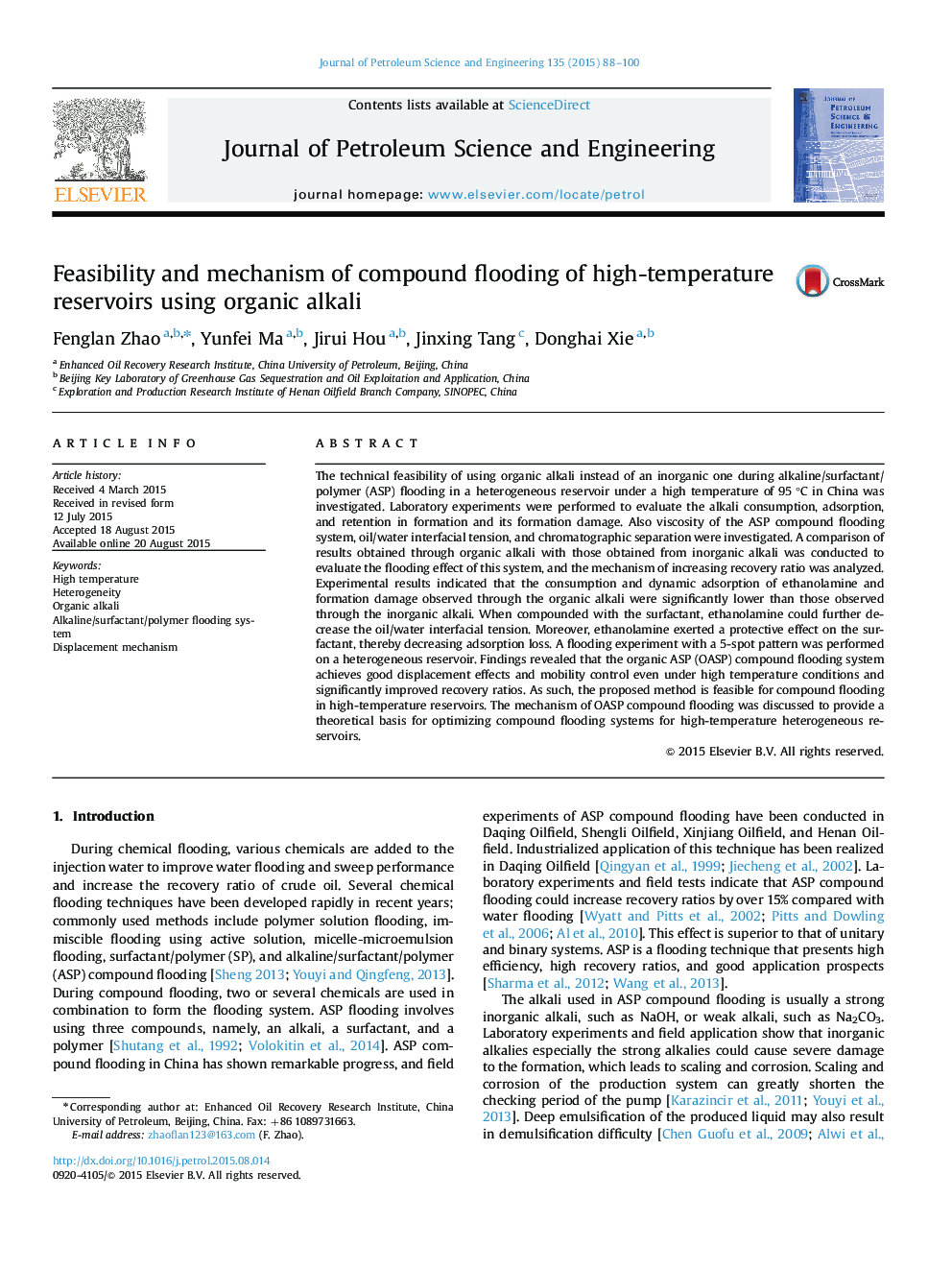| Article ID | Journal | Published Year | Pages | File Type |
|---|---|---|---|---|
| 8126320 | Journal of Petroleum Science and Engineering | 2015 | 13 Pages |
Abstract
The technical feasibility of using organic alkali instead of an inorganic one during alkaline/surfactant/polymer (ASP) flooding in a heterogeneous reservoir under a high temperature of 95 °C in China was investigated. Laboratory experiments were performed to evaluate the alkali consumption, adsorption, and retention in formation and its formation damage. Also viscosity of the ASP compound flooding system, oil/water interfacial tension, and chromatographic separation were investigated. A comparison of results obtained through organic alkali with those obtained from inorganic alkali was conducted to evaluate the flooding effect of this system, and the mechanism of increasing recovery ratio was analyzed. Experimental results indicated that the consumption and dynamic adsorption of ethanolamine and formation damage observed through the organic alkali were significantly lower than those observed through the inorganic alkali. When compounded with the surfactant, ethanolamine could further decrease the oil/water interfacial tension. Moreover, ethanolamine exerted a protective effect on the surfactant, thereby decreasing adsorption loss. A flooding experiment with a 5-spot pattern was performed on a heterogeneous reservoir. Findings revealed that the organic ASP (OASP) compound flooding system achieves good displacement effects and mobility control even under high temperature conditions and significantly improved recovery ratios. As such, the proposed method is feasible for compound flooding in high-temperature reservoirs. The mechanism of OASP compound flooding was discussed to provide a theoretical basis for optimizing compound flooding systems for high-temperature heterogeneous reservoirs.
Related Topics
Physical Sciences and Engineering
Earth and Planetary Sciences
Economic Geology
Authors
Fenglan Zhao, Yunfei Ma, Jirui Hou, Jinxing Tang, Donghai Xie,
